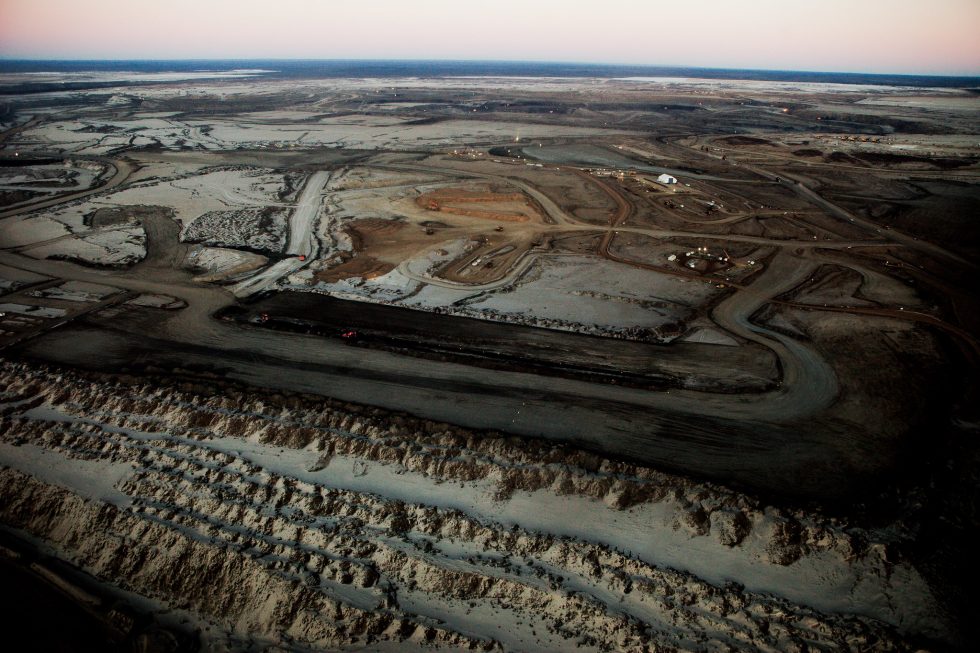By now, most of us have heard the term, “tar sands.” These underground deposits of thick, sticky petroleum called bitumen can be found all over the world, but a massive deposit in Alberta, Canada, often gets the most attention. Oil companies extract more than a million barrels of bitumen a day from deposits beneath Alberta’s peat bogs and ancient boreal forests, destroying those natural areas in the process. Calgary-based oil and gas transportation company Enbridge then pumps the bitumen through its system of pipelines, including the 645-mile Line 5 that runs across Wisconsin.
“The Line 5 Pipeline carries petroleum originating from the Canadian tar sands and North Dakota’s Bakken oil fields from Superior, across northern Wisconsin, and through Michigan back to a refinery in Canada for processing,” explains Clean Wisconsin staff scientist Paul Mathewson.
Tar sands oil is carried to Line 5 via another Enbridge pipeline, the embattled Line 3, which runs from Canada across Minnesota. But before tar sands oil can wind its way through some of the upper Midwest’s most pristine natural areas and critical waterways, including the shores of Lake Superior and the Straights of Mackinac, it must be heavily processed.
“Tar sands are really a mixture of bitumen, sand, clay and water,” Mathewson explains. “Unlike conventional crude oil, which can be pumped from underground deposits and then piped to refineries, bitumen requires much more effort to extract and transport.”
That effort takes energy, largely supplied by fossil fuel combustion. There are two main, and ways to get bitumen out of the tar sands deposits, and neither one is easy.
“Surface, open-pit mining is used for shallow deposits, and the bitumen is extracted by mixing the oil sand with hot water to make a slurry that can be pumped to a processing facility where the bitumen is separated from the water and sand,” Mathewson says. “Deeper deposits are extracted by injecting hot steam into the sands to reduce the bitumen’s viscosity, allowing it to be pumped to the surface.”
Once the tar-like substance is collected, it’s still far too thick to be pumped through a pipeline. So it is either processed on site into a synthetic crude oil—a less viscous product that can piped—or it is diluted with a mixture of solvents.
“Fuels derived from tar sands oil create about 20% more greenhouse gases than conventional fuels because it takes so much effort just to get them out of the ground and pumped to refineries. Then you have to add in the significant carbon releases of the peatland where deposits are located, which are destroyed by the mining process,” Mathewson says.
These additional greenhouse emissions make tar sands oil one of the dirtiest sources of energy out there. To make matters worse, the risk of environmental catastrophe during transport is very real. Enbridge’s Line 5 has spilled oil into the environment dozens of times since its construction 68 years ago. Line 3 created the worst inland oil spill in U.S. history when it leaked 1.7 million gallons in Grand Rapids, Minn., in 1997. And spills involving tar sands oil can be especially devastating.
“This diluted bitumen product in the pipeline, referred to as ‘dilbit,’ acts differently than conventional crude oil if spilled into the environment. In aquatic environments, dilbit is more difficult to clean up, since the dilution mixture rapidly evaporates or separates from the bitumen. The dense and heavy bitumen then sinks instead than staying on the surface—like most constituents of conventional crude oil are prone to do—where it is easier to find and clean up,” Mathewson says.
As tribes, environmental groups, municipalities and state governments like Michigan battle to evict Line 5 and the tar sands oil it carries, scientists warn that the rest of that thick, tarry oil needs to stay in the ground.
“As we attempt to keep global warming under 2°C under the Paris Agreement, the Canadian tar sands are really getting a lot of attention,” Mathewson says. “A study published in the journal Nature analyzing which fossil fuel reserves should be left unused concluded that tar sands oil production would have to drop to ‘negligible’ levels to meet that goal. We can’t keep extracting and using this stuff and still hope to avoid the worst impacts of climate change.”

